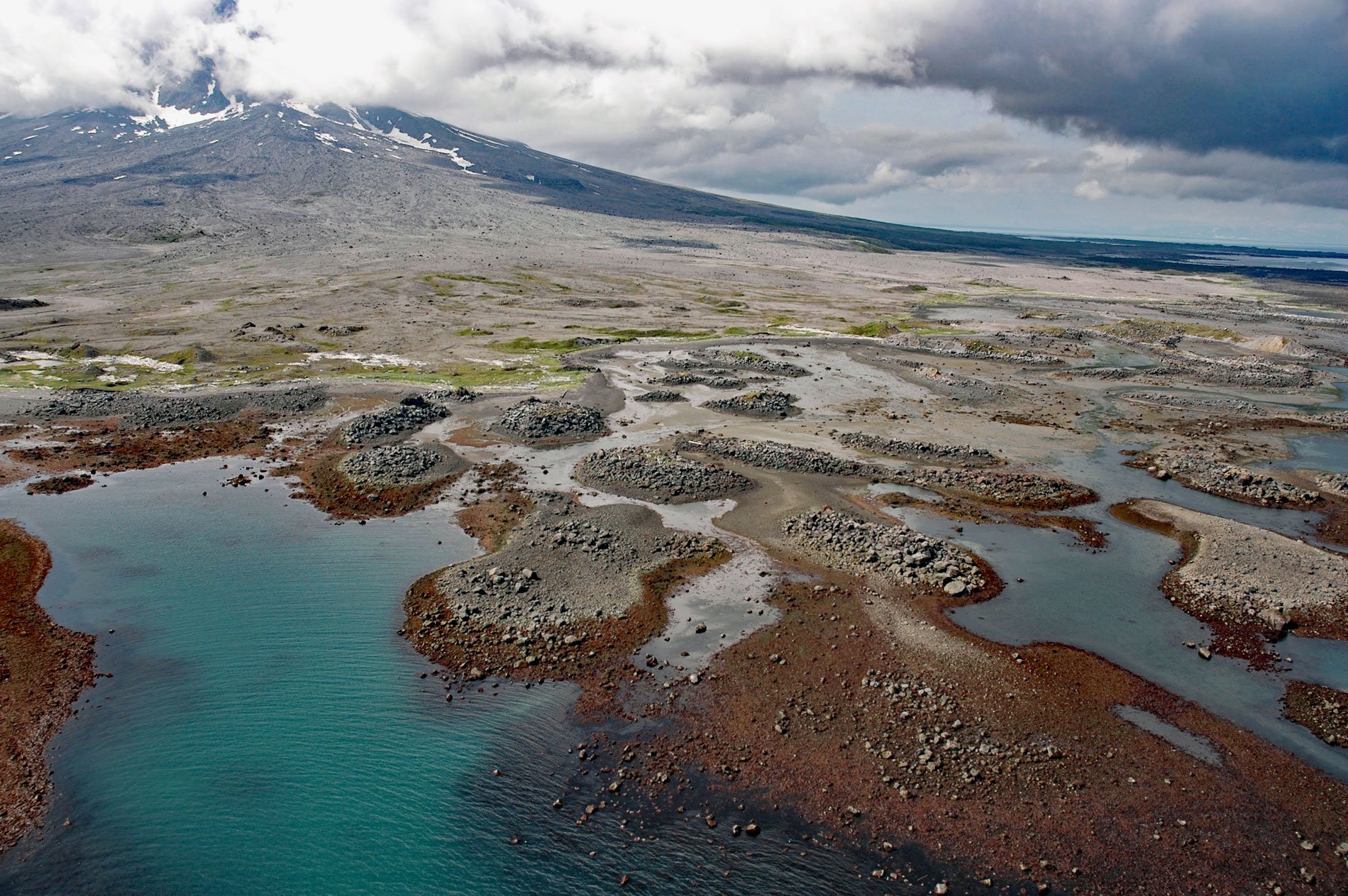Burr Point is a headland on Augustine Volcano in Cook Inlet, about 108 miles (174 km) north-northwest of Kodiak and 69 miles (111 km) southwest of Homer, Alaska. Burr Point was reputedly named in 1914 by the U.S. Coast and Geodetic Survey for the burr-like appearance of mounds forming the northeast coast of the volcano.
Augustine Volcano forms an island in Kamishak Bay with a summit elevation of 4,134 feet (1260 m). The island was first discovered and named “Saint Augustine Island” in 1778 by Captain James Cook of the Royal Navy. The following year, it was called “Pan de Azucar”, or ‘“sugar loaf”, by Don Ignacio Arteaga of the Spanish Navy. In 1852, Captain Tebenkov, of the Imperial Russian Navy, called it “Mount Chernoburoy”, which was derived from the Russian words “chernyy” meaning “black”, and “buryy” meaning “brown”.
Uninhabited Augustine Island has a nearly symmetrical central summit. Ash from the last major eruption in 1986 reached Anchorage, about 180 miles (290 km) to the northeast. A major eruption in 1883 caused a tsunami of 30 feet (9 m) that reached and destroyed the village of English Bay (now Nanwalek) on the Kenai Peninsula. Debris avalanches and landslides from the 1883 eruption are the likely origins of Augustine’s hummocky coastal topography around Burr Point. The debris avalanche buried the former shoreline and displaced the new shoreline 1 mile (1.6 km) seaward at Burr Point. Bathymetry indicates the 1883 debris avalanche traveled an additional 1.8 miles (3 km) northward beneath the sea. Most of the material is comprised of angular fragments of cobbles to boulders but clasts as large as 10 to 25 feet (4 to 8 m) were also found. Learn more about Augustine Volcano here and here. Explore more of Burr Point and Augustine Island here:

